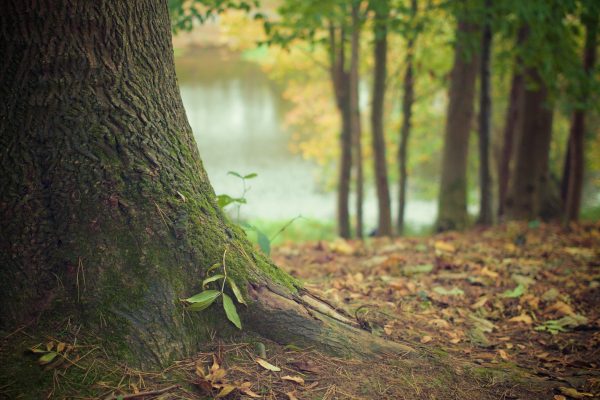
tree pruning
-

Is Tree Risk Management expensive?
-
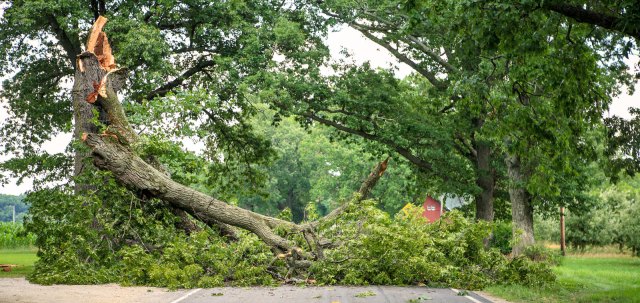
What does it mean when a tree has been inspected?
-
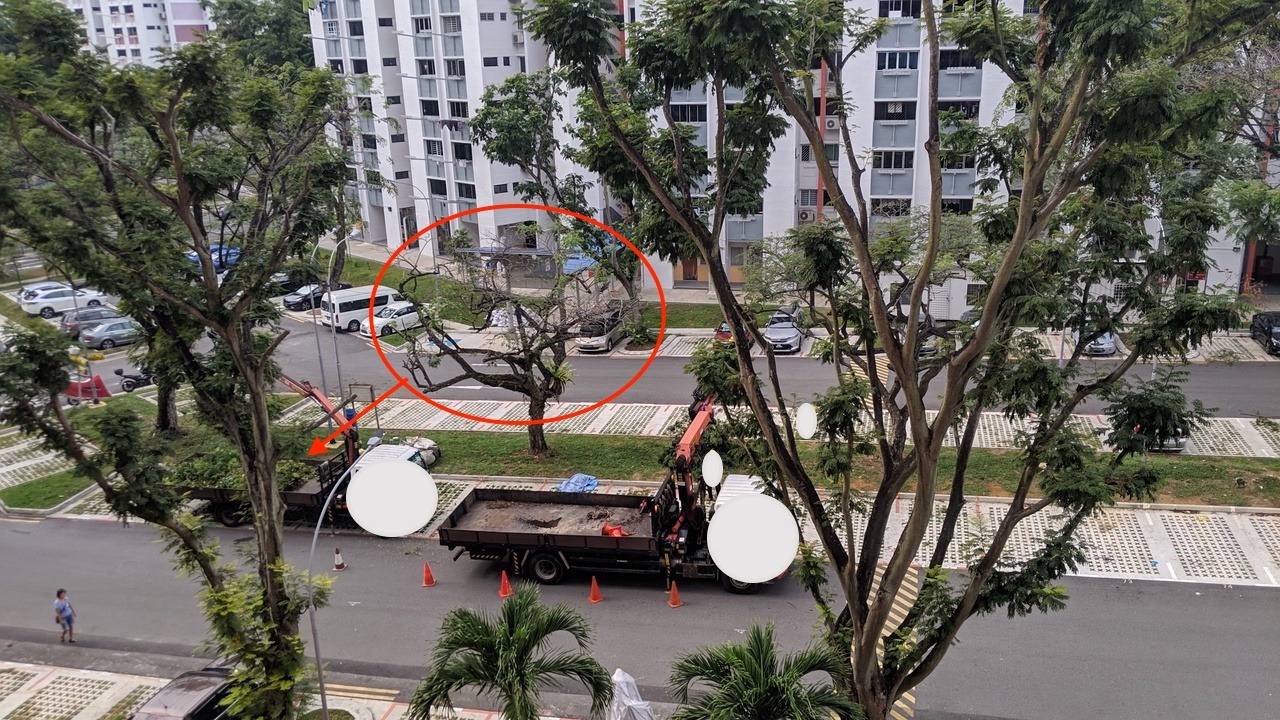
Being a Responsible Tree Owner
-

Good and Bad tree pruning: A simple comparison
-

5 Tree Care Myths

Is Tree Risk Management expensive?
Property owners in Singapore often require professional recommendations on tree risk and health. Arborists sometimes prescribe conservative recommendations because risk-adverse property owners appreciate new buildings; concrete and metal rather than trees.
Arborists are translators, communicating a tree’s messages to humans. But there is great pressure to fall in line with the property owner’s expectations and dispose of liability. Risk can never be reduced to zero while retaining a tree’s benefits. Like a medical doctor faced with a litigious patient and their family, an arborist will recommend the most conservative solutions of expensive surgery or removal.
These trees have been standing for many decades, providing shade, improving the air, supporting the ecosystem, silently working 24 hours a day for our benefit. All they require is regular attention every few months.
Having low risk, well-managed trees in an estate costs very little. Expensive surgery only results from old, sick trees that were poorly maintained, made worse by a property owner’s risk adverse attitude.
Here lies my love for trees, I found this poem in an old book:
The Tree’s Prayer
You who would pass by and raise your hand against me
listen before you harm me.
I am the heat of your hearth on the cold winter nights,
the friendly shade screening you from the summer sun;
And my fruits are refreshing draughts
quenching your thirst as you journey on.
I am the beam that holds your house,
the board of your table,
the bed on which you lie
and the timber that build your boat.
I am the handle of your hoe
and the door of your homestead,
the wood of your cradle
and the shell of your coffin.
I am the gift of God
and the friend of man.
You who pass by, listen to my prayer…
Harm me not.
-Translated from “Ao Viandante”, Veiga Simões, May 1914.

What does it mean when a tree has been inspected?
The International Society of Arboriculture (ISA) divides tree risk assessment into three levels.
Inspection Types:
Level 1: Limited Visual Assessment (eyes only inspection, on foot, drive-by etc)
Level 2: Basic Assessment (ground level inspection with simple hand tools)
Level 3: Advanced Assessment (climbing may be involved along with diagnostic equipment.)
These are often modified to collect additional data that clients deem important and within available timeframe and resources.
For example, in a large estate with thousands of trees, trees situated away from human habitation may get a Level 1 assessment, while trees close to road junctions or of a certain girth size receive Level 2 or 3 assessments on a more frequent basis.
Evaluating Tree Risk:
Tree Risk is evaluated in the following way,
- Grade the likelihood of failure of identified tree parts (could be branches, trunk etc).
- Grade the likelihood of the part actually landing on targets in the event of failure:
- Combine likelihood of failure and impact into an overall likelihood grade using a matrix
- Grade the consequences of failure.
- Now we have all we need to give the risk a grade…through another matrix,
Risk rating matrix
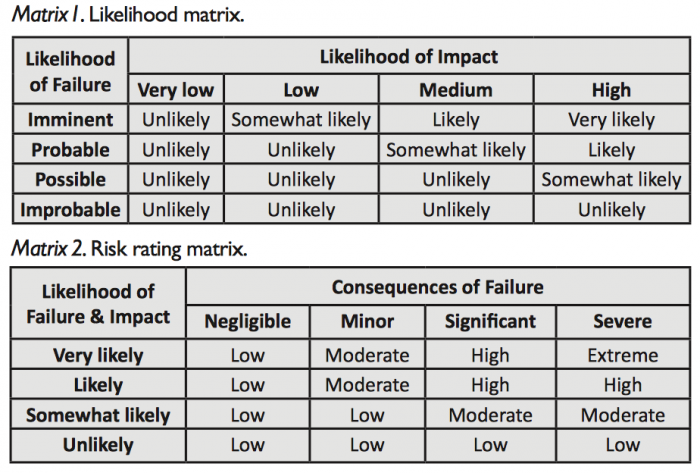
The risk rating gives a good gauge for prioritizing remedial actions. It is worth stressing that every part of the process, not just the final rating, is important. An insufficiently thorough assessment level cannot give enough information for a reliable risk rating, while an overly excessive assessment level wastes time and resources.
We hope that this gives the public a better idea of how tree risk is evaluated, this is but a brief explanation of the risk assessment process. Full tree risk assessment courses and manuals should be available from the Centre for Urban Greenery and Ecology (CUGE).
Sources
https://i1.wp.com/greenscenenz.com/wp-content/uploads/2015/10/healthhaz.jpg?resize=640%2C303

Being a Responsible Tree Owner
Removing all live foliage is NOT a good idea. Note the leaves on the lorry and not on the tree.
You may have noticed that areas with poorly maintained trees get hotter.
This is no coincidence, a recent study published in the Proceedings of the National Academy of Sciences (PNAS) reports that tree cover can affect temperatures by up to 5.7°C (Ziter, 2019). It is the difference between being in the tropical heat at 30°C and in an air-conditioned room at 24 to 25°C.
- The urban heat island effect is the result of concrete, asphalt and other impervious man-made surfaces interacting with sunlight, thereby raising local temperatures.
- Areas with more than 40% tree canopy cover disrupt this process and lower temperatures (Ziter, 2019).
- Poor tree maintenance lowers tree canopy coverage, raises temperatures.
What often happens is that tree owners disown liability and foist responsibility unto landscape contractors with fine print in poorly-worded contracts, assuming the hired contractors know what is best for their trees.
Do not assume landscape contractors know what is best for your trees.
Landscape contractors vary in tree maintenance knowledge breadth and depth. Anyone can start hacking away at a tree with a chainsaw, years of experience is not a good indication of tree maintenance knowledge. Contractors want repeat customers, they will do what they are told even if the tree owner suggests something wrong. Incompetent contractors will straight up offer solutions that harm trees.
Tree owners must have some basic knowledge so that they do not give their contractors incorrect instructions or accept their contractor’s offered solution at face value.
At the bare minimum, visit one of the trees with the contractor and ascertain where they will cut. Agree on how much foliage is to be removed before work (anything more than 30% is usually too much).
Under no circumstances should a contractor be allowed to top/head/hat-rack/pollard a tree in Singapore, harming trees by leaving behind ugly bare stubs.

Topping cuts that leave bare stubs harm trees.
When faced with evidence that the hired landscape contractors are damaging their property, irresponsible tree owners shy away from further corrective action on their part as long as their proverbial behinds are covered by their maintenance contracts.
If you, or someone you know, are in-charge of trees in or near public spaces, we would like to take the opportunity to beseech you to take responsibility for the plants in your care. Educate yourselves on proper tree maintenance. Do not assume landscape contractors know what is best for your trees. And definitely do not use maintenance contracts as a way to shift responsibility to the contractor.
If you’re a member of the public and see disfigured trees near your homes, do not stay silent. The trees may have been contributing to a cool and pleasant environment for decades. A spike in your electricity bill from increased fan and air-conditioning use can be an indirect result of tree neglect.
References
Ziter, C. D., Pendersen, E. J., Kucharik, C. J., Turner, M. G. (2019). Scale-dependent interactions between canopy cover and impervious surfaces reduce daytime urban heat during summer. Proceedings of the National Academy of Sciences of the United States of America, 116(15), 7575-7580.

Good and Bad tree pruning: A simple comparison
With over 2 million trees in Singapore, there are massive variances in maintenance standards between trees.
A commonly seen example of bad pruning is “topping”. This practice chops large branches back to a pre-determined limit, into stubs without sufficiently large leaf-bearing branches (also known as a “terminal leader”) nearby. Some trees decline and eventually die because of periodic topping.
Topping is a temporary solution at the expense of overall tree health. Other more sustainable solutions, like thinning and size reduction, could have been implemented with the same resources.
Here is a Syzygium grande that has been repeatedly topped for “safety purposes”. This species has been criticized for its weak branches, but one cannot help but question if bad pruning practices have led to its poor reputation.
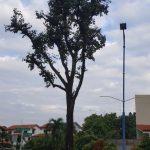
Notice how branches end abruptly. The tree’s natural shape is destroyed, while the topped branches try to put out new leaves to replace lost foliage, giving the tree spots of bushy growth.
Leaves are the photosynthetic factories of a tree; no leaves = no food to support living cells.
Tree longevity should always be kept in mind when pruning. Done by a skilled operator, pruning can improve the overall structure, stability, and health of the tree. Done poorly, higher maintenance costs and hazards from unstable sprout production are likely.
This Alstonia angustiloba below displays good previous pruning.

It has grown short, fat, and dense. Unlike a topped tree, constant maintenance isn’t necessary, its natural shape is retained, and is unlikely to be a public risk.
Plenty of Singaporean trees are topped as a management strategy. With the exception of a few extraordinary circumstances, topping does more harm than good.
We need to understand that while topping might be the easiest solution, it isn’t a sustainable one.
Maintenance frequency for a topped tree (to remove new weakly attached shoots) can run up to once every 3 months. In contrast, a well-managed tree can go for 3 or more years without attention.
For trees in private estates, hiring competent people for tree management is key. Whereas for public trees, signs of poor tree management can be reported to the relevant authorities via https://www.oneservice.sg/.

5 Tree Care Myths
How do myths perpetuate? Are they based on loose truths – or can they be unfounded and harmful? Here are 5 common tree care myths:
Myth 1. Trees planted deep = strong deep roots.

You can’t see root flares when trees are planted too deep. Trees should be planted with root flares above the soil line. The root flare is adapted to be dry and free of soil – if buried in the soil and constantly moist, root flares are susceptible to disease and a source of stress for trees.
Myth 2. Trees require lots of water

Trees need water, but probably not as much as you think. It is easy to drown trees, especially saplings. Mouldy flowers, new and old leaves falling at the same time; are signs of overwatering.
Myth 3. More mulch will benefit trees.

Overmulching or volcano mulching, buries a trees root flare and can disrupt soil moisture and aeration. It’s suggested to apply small amounts over time, narrowing the depth of the mulch as it gets close to the tree trunk.
Myth 4. All insects and fungi that live on trees are harmful.
The vast majority of insects and fungi living on trees are not harmful to tree health. Insects help in pollination, fungi can capture water and nutrients; making more resrouces avaialble to tree roots.
Myth 5. Pollarding and topping are the same thing.
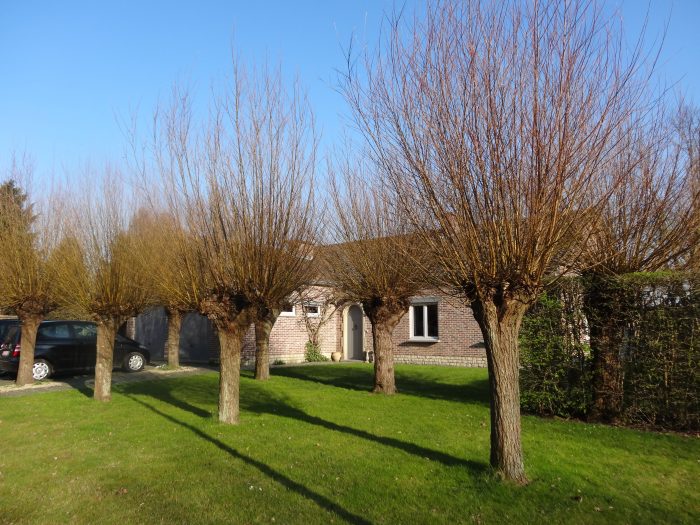
Pollarding is done intentionally, usually for aesthetics; it’s planned and executed on schedule, beginning while trees are young.
Topping is indiscriminate, with large mature trees cut down to an imaginary line without regard to tree biology. This can lead to a shortened lifespan. The shoots produced in response to topping cuts are often weakly attached and break off as they grow larger.
Image Sources:
- http://shadetreeexpert.com/2013/wp-content/uploads/2013/01/Marshview1.jpg
- https://livinginglastonburyct.files.wordpress.com/2013/05/healthy-root-flare-cropped-6-inch-size.jpg
- http://treefredericksburg.org/wp-content/uploads/2014/03/not-bad-for-tree.jpg
- http://www.arbordoctor.net/overwatered-tree.jpg
- http://www.dailyherald.com/storyimage/DA/20150814/news/150819505/EP/1/2/EP
- jpg&updated=201508131606&MaxW=800&maxH=800&noborder
- https://jardindesigndotorg1.files.wordpress.com/2014/03/pollarding-010.jpg
